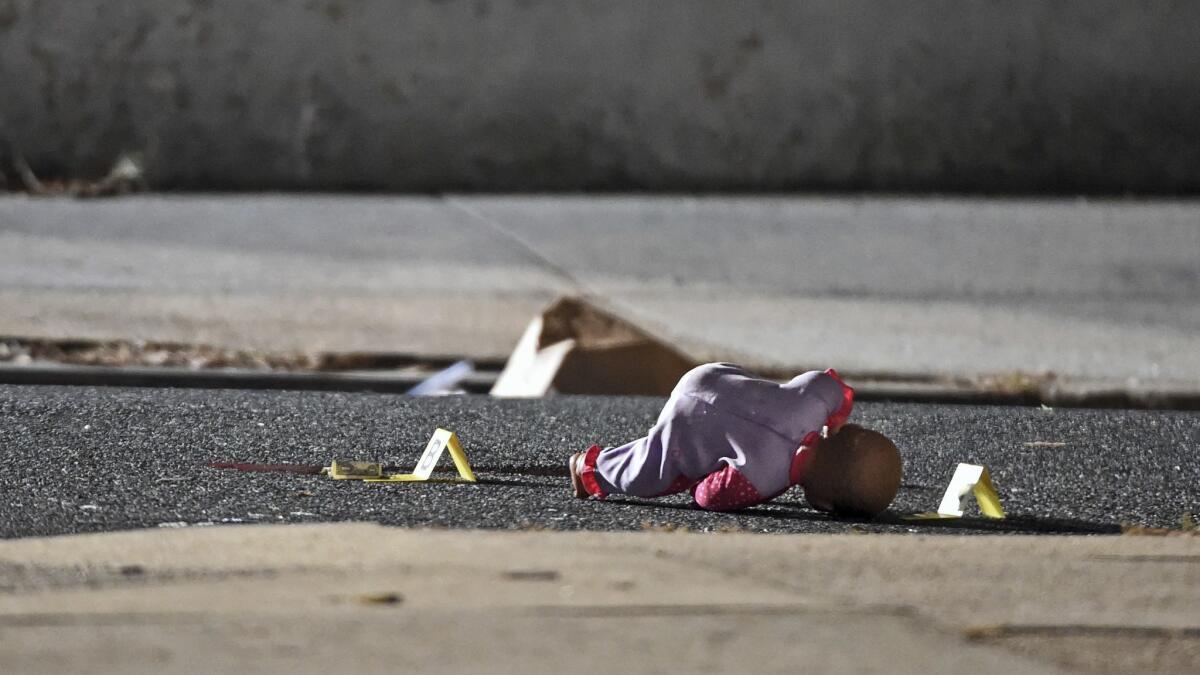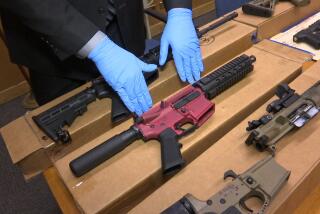More than 15% of childhood deaths in America are due to guns, study says

More than 3,000 children and adolescents died of a gunshot wound in the United States in 2016, a new tally of childhood deaths finds. These episodes accounted for 15.4% of all Americans between the ages of 1 and 19 who died in 2016, and a quarter of those killed by injury rather than disease.
As they inch their way back to rates last seen in 1999, childhood deaths attributed to firearms â 3,143 â generated 70% more grieving families than those produced by pediatric cancer â 1,853. Guns also broke the hearts of more than three times as many families than did childhood drownings â 995 â or the combined category of poisoning deaths and fatal drug overdoses â 982.
The figures â the latest and most comprehensive accounting of childhood deaths available â were published Wednesday in the New England Journal of Medicine. They were compiled by a team from the University of Michigan.
The number of children who died of a gunshot wound intentionally inflicted by someone else in 2016 â 1,865 â came in just ahead of the 1,852 childhood deaths attributed to birth defects, heart disease and chronic respiratory diseases. The number of children or adolescents who took their own lives with a gun â 1,102 â represents half of all children and adolescents who died by suicide that year.
Childhood deaths caused by a firearm in 2016 were exceeded only by those caused by motor vehicle crashes: 4,074. Although thereâs been a worrisome rise in such fatalities since 2013, safety improvements and drunk driving initiatives have steadily driven the pediatric toll of vehicle accidents to roughly half their 1999 rate.
At 4.02 per 100,000 children, the 2016 rate of childhood firearm deaths stands at half the rate of pediatric gun deaths (8.12 per 100,000) seen in 1993, their most recent peak.
But the decline has stalled: The 2016 rate represents a reduction of less than 10% from rates seen in 1999. Between 2013 and 2016, the rate of gun-related deaths among kids in the U.S. grew by 28%. That upward trend in firearm mortality reflected a 32% increase in the rate of firearm homicide and a 26% increase in the rate of youth suicides carried out with a gun.
The relatively steady toll of firearms stands in contrast, too, to trends in childrenâs cancer deaths. By 2016, improved detection and treatment of pediatric cancer helped reduce such deaths by almost one-third since 1999. Over four decades, a child diagnosed with cancer has seen her odds of surviving rise from 10% to nearly 90%.
It still adds up to too many deaths occurring too soon in life, according to Dr. Edward W. Campion, executive editor of the New England Journal of Medicine.
âChildren in America are dying or being killed at rates that are shameful,â Campion wrote in an editorial published alongside the new report. He called the death of a child âa crime against natureâ and âthe most stressful thing that can happen to parents and siblings.â
Despite progress is some areas, he wrote, âthe United States is clearly not effectively protecting its children.â
The authors of the new report, as well as Campion, were even-handed about the various causes of childrenâs deaths in the United States. They noted the role of cellphone distraction in driving up motor vehicle deaths in recent years. They lauded the effects of pool fencing in reducing drownings, and of smoke detectors in preventing childrenâs deaths in house fires. They cited the impact of longer transport times to hospitals to help explain why rural children were more likely to die of injuries than were kids in cities or suburbs.
In short, the authors made no effort to distinguish firearms from any other cause of pediatric death.
The facts they cite do that, and they jump off the page:
⢠The rate of childhood deaths caused by guns in the United States was more than 36 times as high as the rate seen in 12 other high-income countries. The affluent countries that had the next-closest rate â Croatia, Lithuania and Sweden â were still about 20 times lower than the rate in the United States.
⢠One in three U.S. homes with children under 18 has a firearm. In 43% of those homes, it is kept unlocked and loaded, which increases the risk of firearm injuries.
⢠Firearms in 2016 were the leading cause of death among African American children and adolescents, occurring at a rate 3.7 times the rate of gun-related deaths among white youths. African American children were also much more likely than white children to drown, or die in house fires, or of asthma. But the gun-related death rates among African American kids do much more to drive a shocking racial disparity in the United States: While white kids died at a rate of 24.2 per 100,000, black youths died at a rate of 38.2 per 100,000.
⢠Firearm violence in schools accounted for less than 1% of all suicides and homicides among school-age children and adolescents, the authors wrote. But they cited a recent review noting an upward trend in school shooting incidents, with 35 school shootings in 2013, 55 in 2014 and 64 in 2015.
⢠Finally, gun âaccidentsâ claimed the lives of 126 children in 2016. These unintentional deaths represented 26% of all firearm deaths among children between the ages of 1 and 9 and 3% of firearm deaths among adolescents between 10 and 19 years of age.
The authors of the new report werenât keen on the use of the term âaccidentsâ in any context, whether they referred to the unintentional discharge of a gun, a poisoning or a skateboard crash.
Itâs time for Americans to start thinking about kidsâ injuries ânot as âaccidents,â but rather as social ecologic phenomena that are amenable to prevention,â the authors advised.
Underpinned by solid scientific research, public health campaigns have helped drive down kidsâ deaths and injuries in vehicle crashes, drowning and home fires, they wrote. Those approaches should be expanded to âall leading causes of death,â they added.
MORE IN SCIENCE







